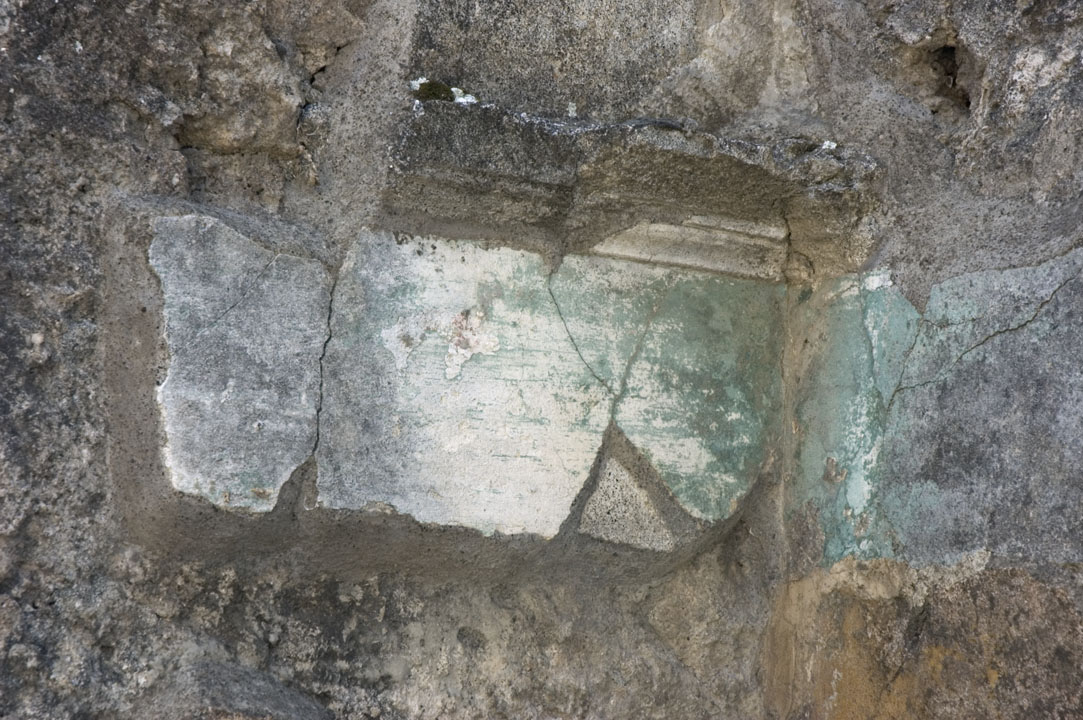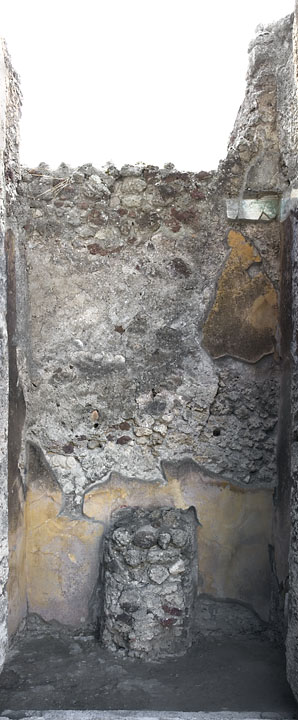Wall decoration (extant)
Description
Thomas Staub
Even in this room, only poor remains of the wall paintings are preserved, mainly on the south wall. This wall shows remains of plaster on three places: 1. on the lower part over the entire wall (except for the altar) up to 1.10 - 1.30 m height, 2. on the western side between 2.00 and 2.85 m height, and 3. on the western side between 2.95 and 3.40 m height. On the lower part, the wall was painted yellow, with a coiling snake on each side. The snake seems to be up to 0.04 m wide in light yellow with contours painted in red. On the snake to the west of the altar, the skin's structure is depicted through rounded crosswise depicted lines. Occasional green spots on the yellow ground could be remains of painted plants. Just above the altar, in ca. 1.00 m height, a 0.07 m thick red stripe framed the altar. On the western side of the altar, some small remains of painted marble with red veins on a lighter ground are visible.
Also in the next area with plaster, some traces of colour indicate a yellow painted background. At the top of this area, between 2.80 and 2.85 m height, remains of a painted garland made of sharp plant leafs can be observed. The uppermost-decorated area shows a 0.15 m high green band followed by a 0.07 m high, 0.05 m deep, profiled stucco cornice, belonging to the decorations of the first style.
On the W wall, hardly any traces are visible. It seems as if this wall had a yellow ground, probably up to 2.95 m height. This yellow ground continues over the corner onto the western part of the north wall on the front side of the western doorframe towards atrium4. Above 2.30 m height, a 0.05 m wide red corner stripe is visible. In 2.95 m height, a plaster joint separates the yellow painted plaster from the green stripe, probably belonging to the first style decorations. Of the stuccoed cornice, no remains are preserved. On the east wall, only the yellow ground of the lower part of the decorations is preserved, continuing over the corner on the lower part of the north wall. On the eastern part of the north wall, above 1.90 m height, remains of a later covered layer of white plaster are visible, probably also remainders of the first style decorations.



